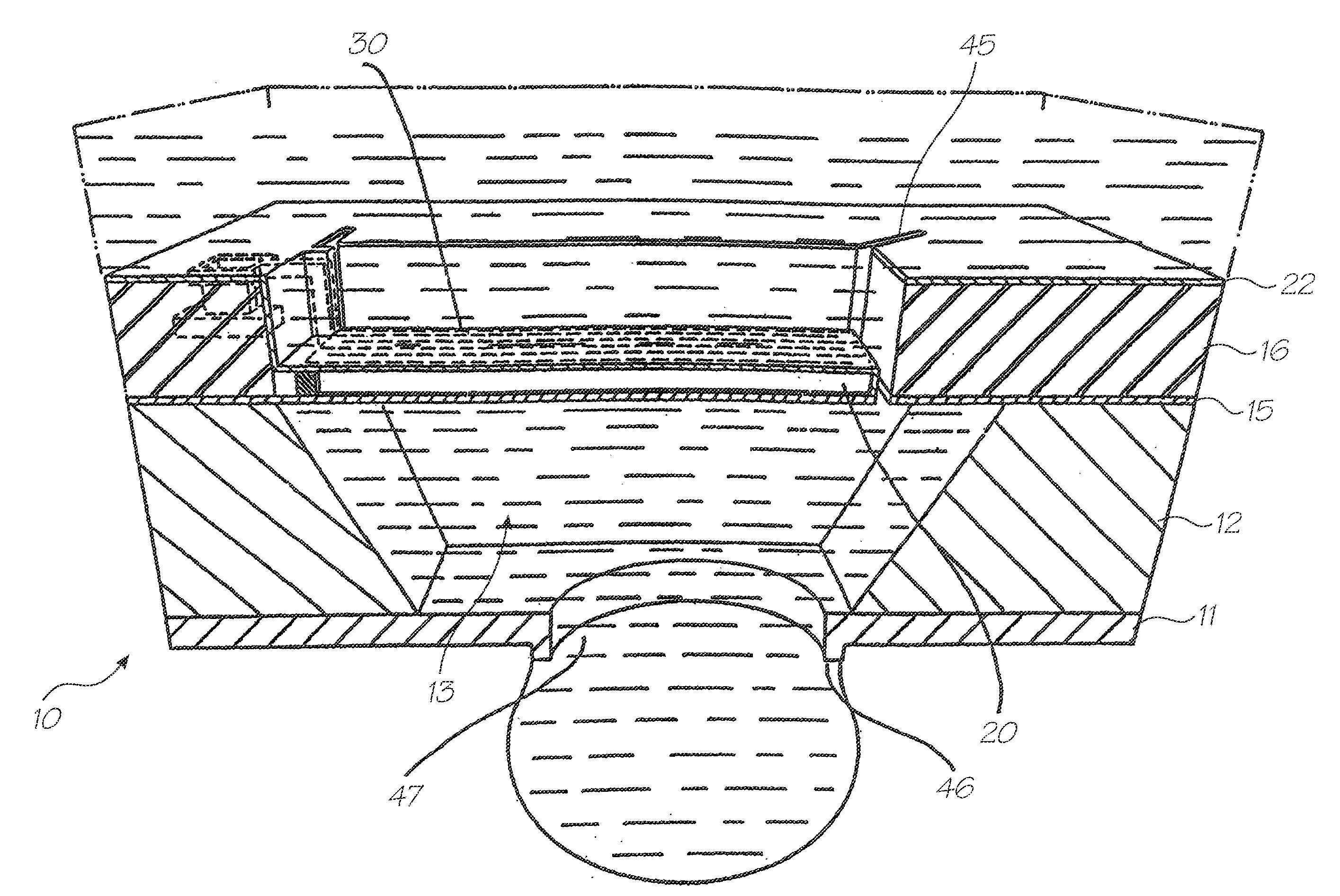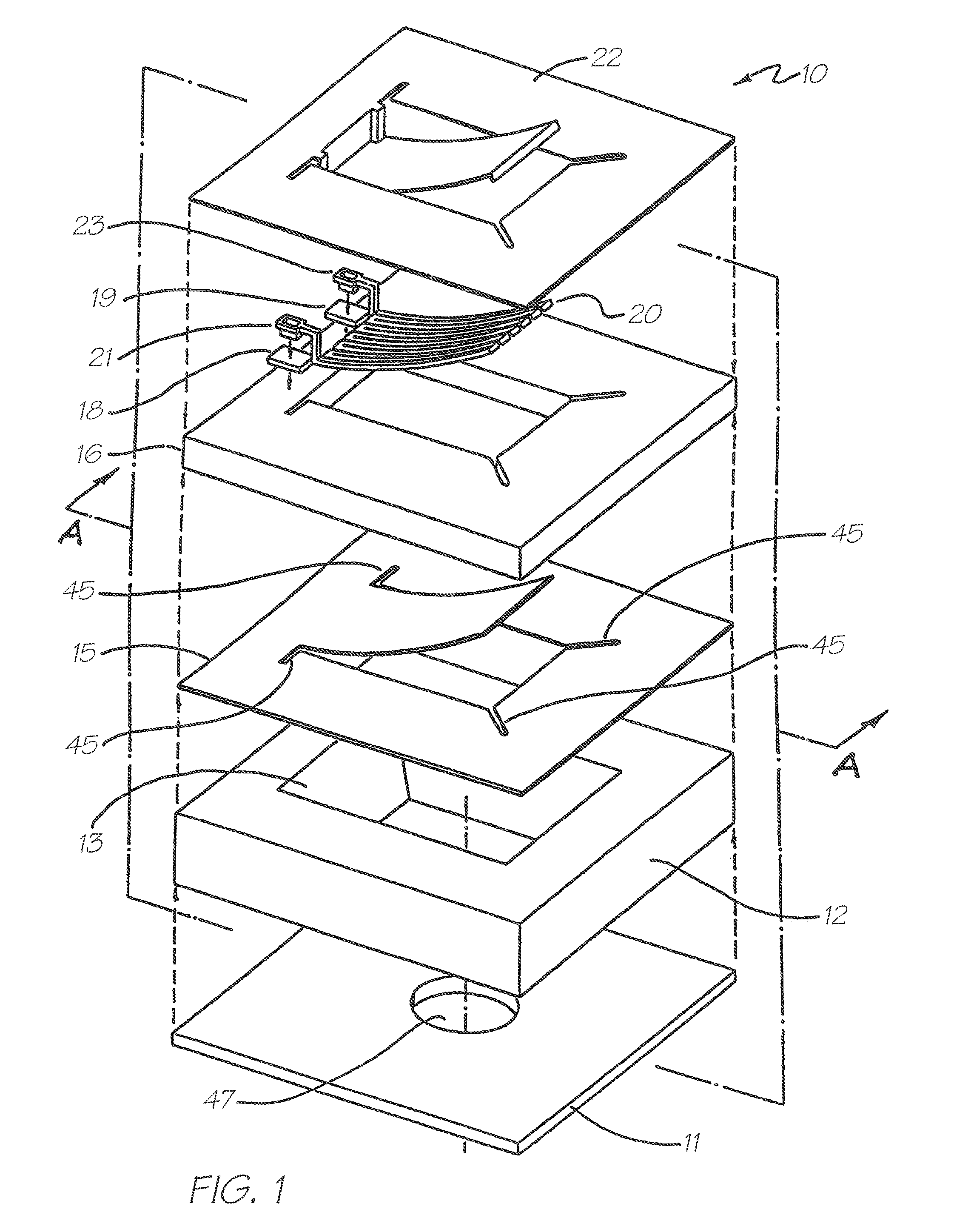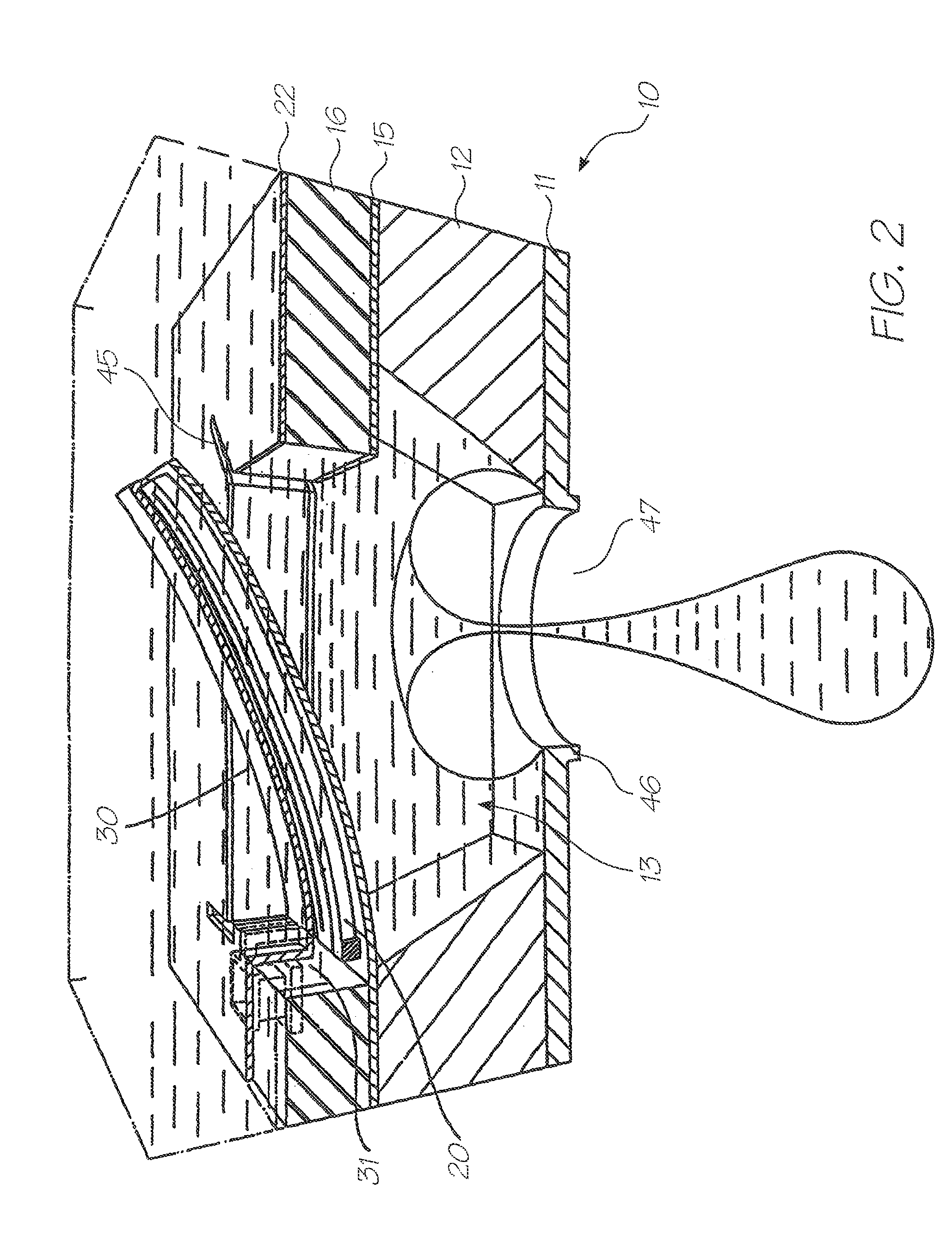Method of forming printhead by removing sacrificial material through nozzle apertures
a technology of sacrificial material and nozzle aperture, which is applied in the field of printing head, can solve the problems of limiting the size of the nozzle array, and reducing the volume of ink between the ink chamber and the actuator substrate, so as to reduce the volume of ink, and limit the print speed
- Summary
- Abstract
- Description
- Claims
- Application Information
AI Technical Summary
Benefits of technology
Problems solved by technology
Method used
Image
Examples
Embodiment Construction
IJ26
[0077]The embodiment shown in FIGS. 1 to 15 is referred to by the Applicant and within the Assignee company, as the IJ26 printhead. In this printhead, shape memory materials are utilized to construct an actuator suitable for injecting ink from the nozzle of an ink chamber.
[0078]FIG. 1 illustrates an exploded perspective view 10 of a single ink jet nozzle as constructed in accordance with the preferred embodiment. The ink jet nozzle 10 is constructed from a silicon wafer base utilizing back etching of the wafer to a boron doped epitaxial layer. Hence, the ink jet nozzle 10 comprises a lower layer 11 which is constructed from boron doped silicon. The boron doped silicon layer is also utilized a crystallographic etch stop layer. The next layer comprises the silicon layer 12 that includes a crystallographic pit 13 having side walls etched at the usual angle of 54.74 degrees. The layer 12 also includes the various required circuitry and transistors for example, CMOS layer (not shown)...
PUM
 Login to View More
Login to View More Abstract
Description
Claims
Application Information
 Login to View More
Login to View More - R&D
- Intellectual Property
- Life Sciences
- Materials
- Tech Scout
- Unparalleled Data Quality
- Higher Quality Content
- 60% Fewer Hallucinations
Browse by: Latest US Patents, China's latest patents, Technical Efficacy Thesaurus, Application Domain, Technology Topic, Popular Technical Reports.
© 2025 PatSnap. All rights reserved.Legal|Privacy policy|Modern Slavery Act Transparency Statement|Sitemap|About US| Contact US: help@patsnap.com



